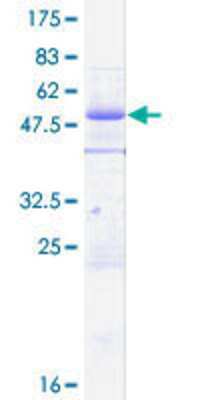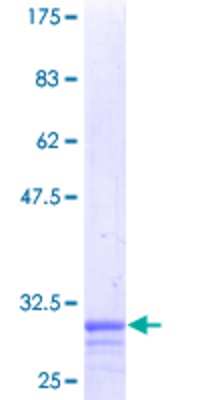NIPA Products
Entry into mitosis is essentially driven by cyclin B1, which is located in the cytoplasm throughout interphase, but accumulates in the nucleus just before mitosis occurs. Nuclear interaction partner of ALK (NIPA) plays a critical role in cyclin B1 regulation. NIPA is normally phosphorylated during G2 and M phases, resulting in an accumulation of cyclin B1. When NIPA sheds its attached phosphate, it binds to SCF to form the SCFNIPA complex, a member of the E3 ubiquitin ligases, which ubiquitinates cyclin B1, thereby targeting it to the proteosome for degradation. Therefore, the accumulation of cyclin B1 is due to the inability of phosphorylated NIPA to bind to the molecule SCF, thereby preventing the degradation of cyclin B1. An absence of NIPA causes cyclin B1 to accumulate abnormally, leading to premature mitotic entry, loss of checkpoint control and genomic instability, which are all associated with cancer. The phosphorylated form of NIPA may also be involved in apoptotic signaling pathways.
Show More
6 results for "NIPA" in Products
6 results for "NIPA" in Products
NIPA Products
Entry into mitosis is essentially driven by cyclin B1, which is located in the cytoplasm throughout interphase, but accumulates in the nucleus just before mitosis occurs. Nuclear interaction partner of ALK (NIPA) plays a critical role in cyclin B1 regulation. NIPA is normally phosphorylated during G2 and M phases, resulting in an accumulation of cyclin B1. When NIPA sheds its attached phosphate, it binds to SCF to form the SCFNIPA complex, a member of the E3 ubiquitin ligases, which ubiquitinates cyclin B1, thereby targeting it to the proteosome for degradation. Therefore, the accumulation of cyclin B1 is due to the inability of phosphorylated NIPA to bind to the molecule SCF, thereby preventing the degradation of cyclin B1. An absence of NIPA causes cyclin B1 to accumulate abnormally, leading to premature mitotic entry, loss of checkpoint control and genomic instability, which are all associated with cancer. The phosphorylated form of NIPA may also be involved in apoptotic signaling pathways.
Show More
Applications: IHC, WB, ICC/IF
Reactivity:
Human,
Mouse,
Rat
| Reactivity: | Human, Mouse, Rat |
| Details: | Rabbit IgG Polyclonal |
| Applications: | IHC, WB, ICC/IF |
Applications: IHC, WB
Reactivity:
Human
| Reactivity: | Human |
| Details: | Rabbit IgG Polyclonal |
| Applications: | IHC, WB |
| Applications: | WB, ELISA, MA, AP |
| Applications: | WB, ELISA, MA, AP |
| Applications: | AC |
| Applications: | AC |

![Immunohistochemistry-Paraffin: NIPA Antibody [NBP1-82564] Immunohistochemistry-Paraffin: NIPA Antibody [NBP1-82564]](https://resources.bio-techne.com/images/products/NIPA-Antibody-Immunohistochemistry-Paraffin-NBP1-82564-img0015.jpg)
![Western Blot: NIPA Antibody [NBP1-82565] Western Blot: NIPA Antibody [NBP1-82565]](https://resources.bio-techne.com/images/products/NIPA-Antibody-Western-Blot-NBP1-82565-img0007.jpg)

